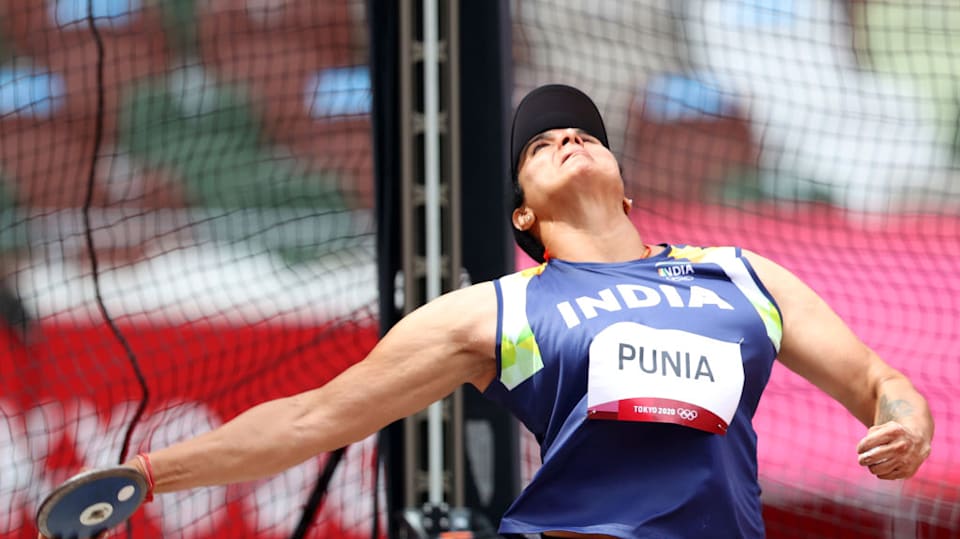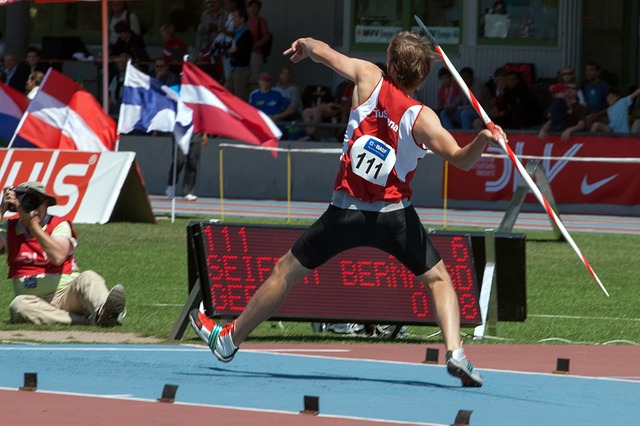4 Easy Facts About 4throws Shown
4 Easy Facts About 4throws Shown
Blog Article
The Ultimate Guide To 4throws
Table of ContentsThe Facts About 4throws RevealedThe Basic Principles Of 4throws Not known Factual Statements About 4throws Everything about 4throwsFascination About 4throws
Resource: United States Flying Force It's constantly enjoyable to see who can throw something the outermost, whether it's a ball, a Frisbee, or even a rock. Track and area is the area where you can throw stuff for range as an actual sporting activity. There are four significant throwing events described below.The discus is tossed from a concrete circle that is about 8 feet in diameter. The professional athlete's feet can't leave the circle before the discus lands or the professional athlete will fault and the throw won't count.
The athlete that throws it furthest from the front component of the circle (and within the lawful location) wins. The javelin is something like a spear. This occasion must be managed at all levels to make sure nobody is injured. The men's college and Olympic javelin evaluates 800 grams (28.2 ounces) and has to do with 8.5 feet long.
The smart Trick of 4throws That Nobody is Talking About
The professional athlete that throws it furthest (and within the legal location) wins. In the shot placed event athletes throw a steel round. The males's college and Olympic shot weighs 16 pounds. The women's university and Olympic shot evaluates 4 kgs (8.8 extra pounds). This sport actually started with a cannonball tossing competition in the Middle Ages.
The front of the circle has a steel board called a toe board. The professional athlete can not touch the top of the toe board or action over it during the throw. The professional athlete holds the shot near to his/her neck in one hand. There are two common throwing strategies: The first has the athlete slide or "glide" from the back to the front of the circle prior to launching the shot.

The 4-Minute Rule for 4throws
In this track and field throwing occasion the athlete tosses a metal sphere affixed to a deal with and a straight cord regarding 3 feet long. The hammer is thrown from a concrete circle 7 feet in size (just like the shot placed) yet there is no toe board.
The athlete rotates several times to obtain momentum before launching and tossing the hammer. Equilibrium is essential because of the pressure produced by having the hefty sphere at the end of the wire. The athlete that tosses it furthest from the front component of the circle (and within the legal area) wins.
We located that humans are able to throw with such rate by storing elastic power in their shoulders. This is accomplished by placing the arm in such a method that the arm's mass resists motions produced check this site out at the upper body and shoulder and rotates in reverse away from the target. This "cocking" of the arm extends the ligaments, tendons, and muscle mass going across the shoulder and stores flexible power (like a slingshot).
We found that people have the ability to throw with such speed by keeping elastic power in their shoulders. This is completed by positioning the arm as if the arm's mass withstands movements generated at the torso and shoulder and turns backwards away from the target. Discuses. This "cocking" of the arm extends the tendons, ligaments, and muscular tissues crossing the shoulder and stores elastic energy (like a slingshot)
9 Simple Techniques For 4throws
(https://www.huntingnet.com/forum/members/4throwssale.html)This upper body turning creates large pressures required to extend the elastic ligaments and tendons in the shoulder. The reducing of the shoulder transforms the positioning of lots of shoulder muscular tissues, consisting of the pectoralis major (the large chest muscle mass), which is important to saving energy. We discovered that low humeral torsion (the turning of the top arm bone) allows us to keep more power and thus, toss much faster.

Usual one-armed throwing methods include overhand tossing (launching with the arm above the shoulder) and underarm throwing (releasing with the arm listed below the shoulder). With both arms, overhanging throwing and chest-passing are common actions. The type of toss utilized is very influenced by the residential properties of the projectile: small, heavy objects are held and pushed away from the body (e.g.
What Does 4throws Do?
weight toss, keg toss); smaller, lighter items such as spheres and darts often tend to make use of a prolonged overarm technique where range or rate is called for, and an underarm strategy where greater accuracy is needed. In these sports, the majority of tosses are extracted from a fixed placement or minimal location. Some sporting activities do consist of a short run-up to the toss line, for example javelin throw and ten-pin bowling.
Report this page